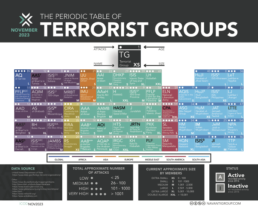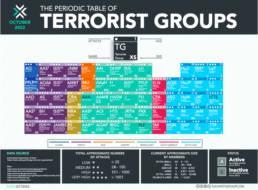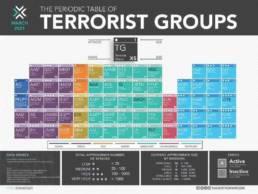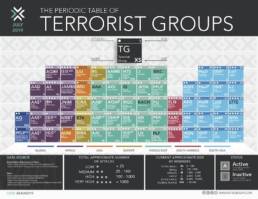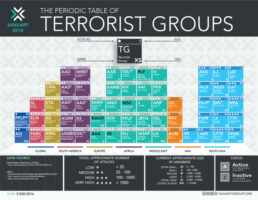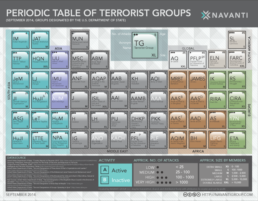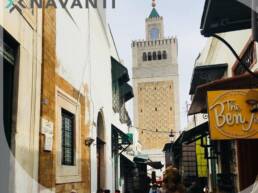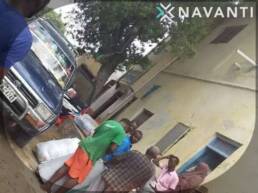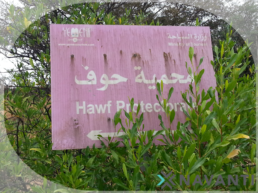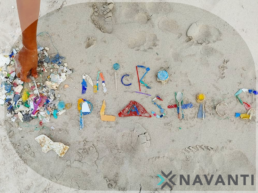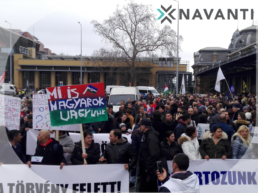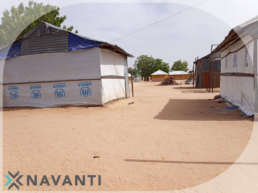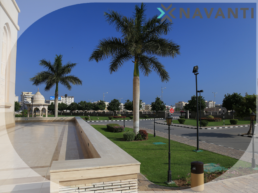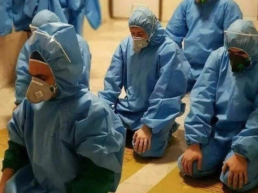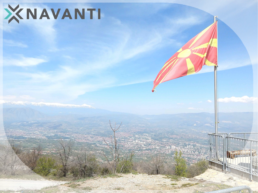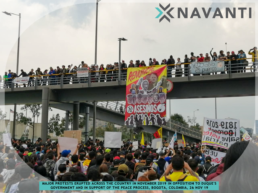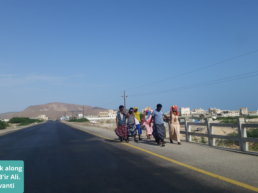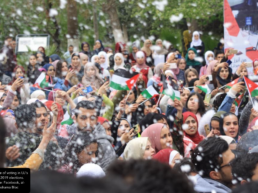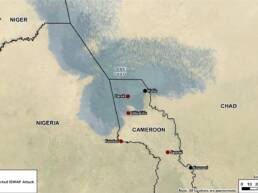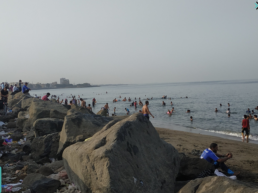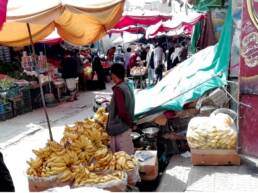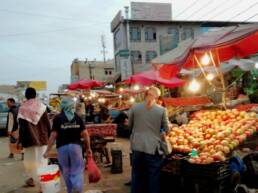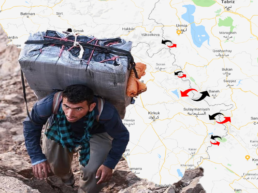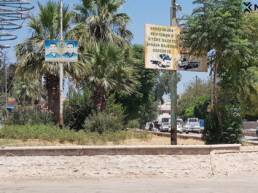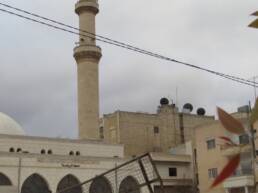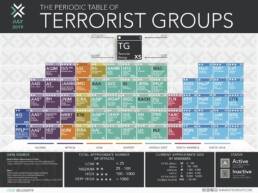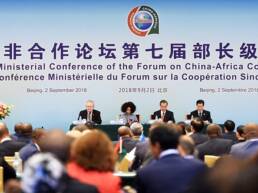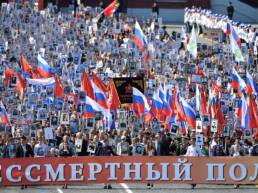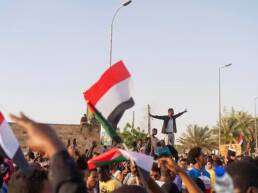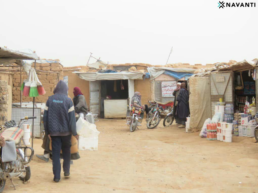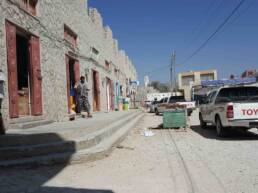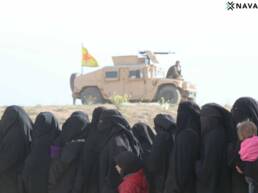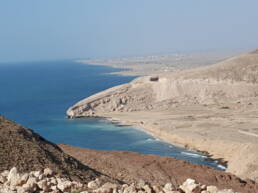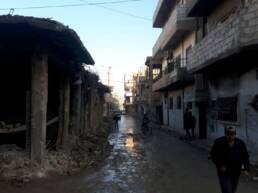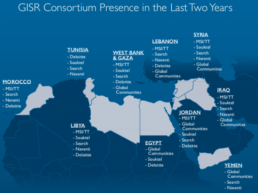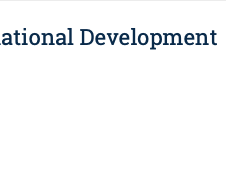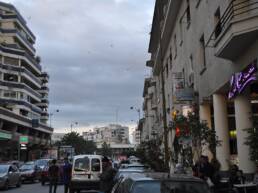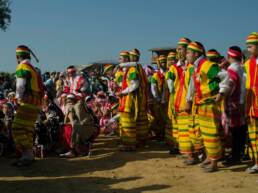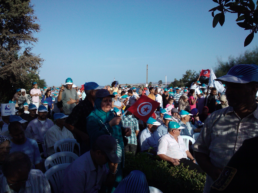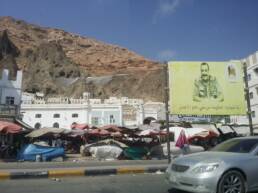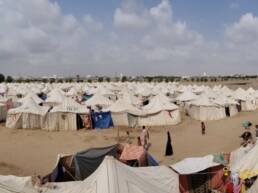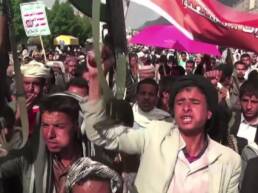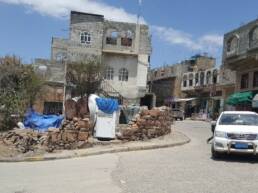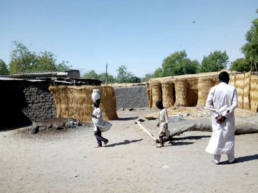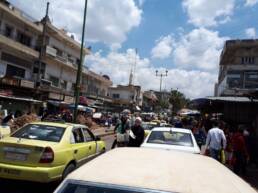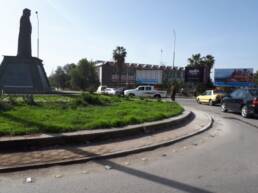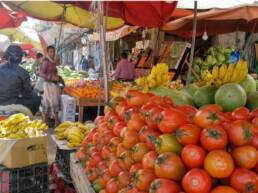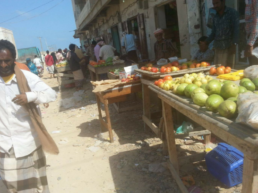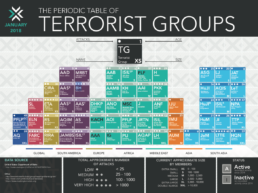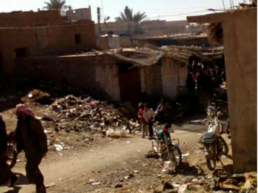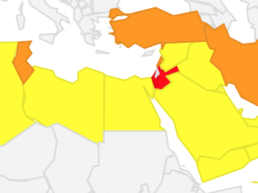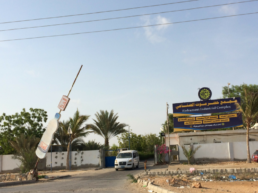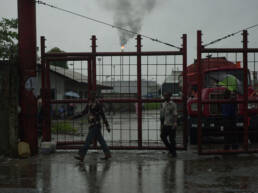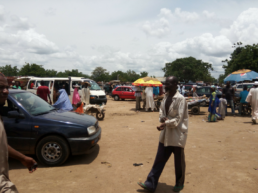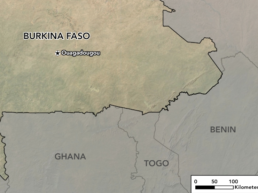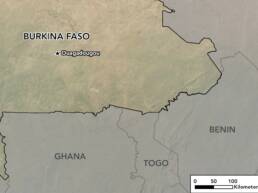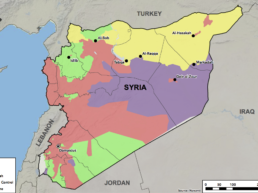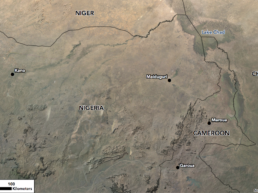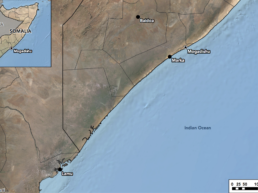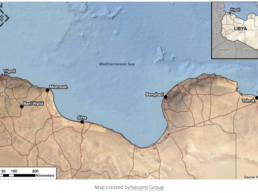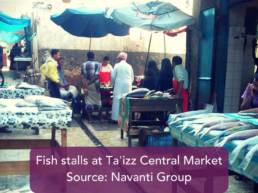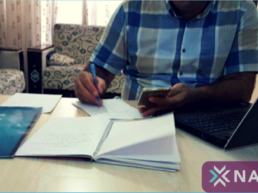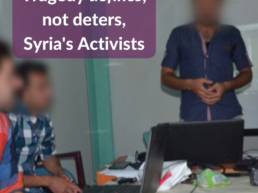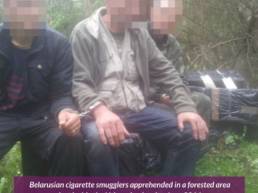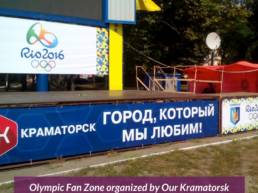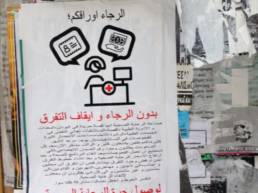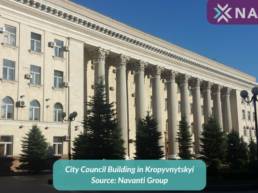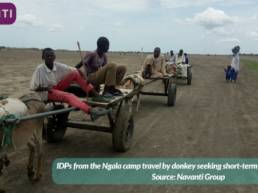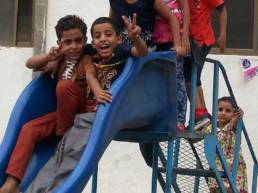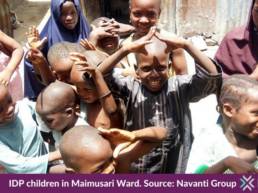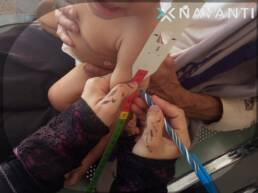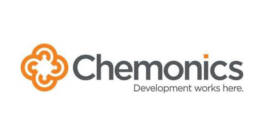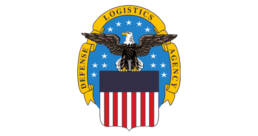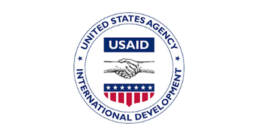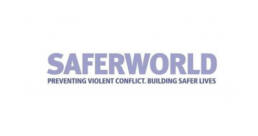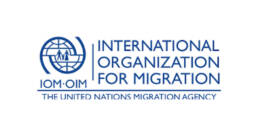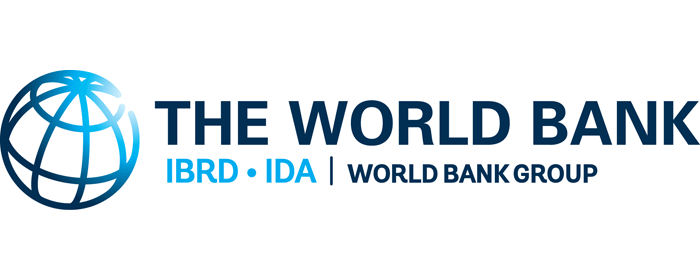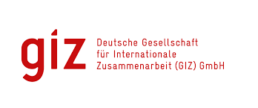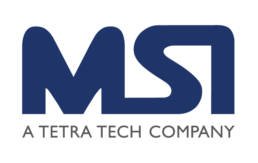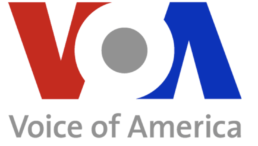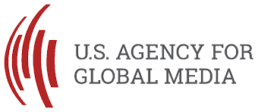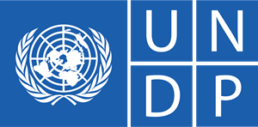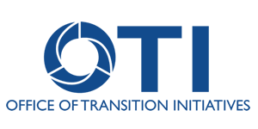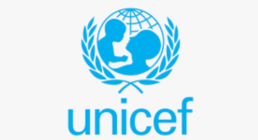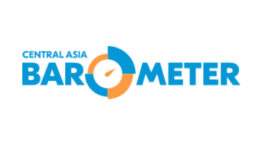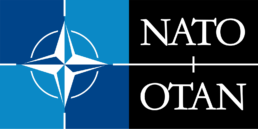Periodic Table
Periodic Table
Periodic Table of Terrorist Groups
Navanti’s Periodic Table of Terrorist Groups provides a visualization of State Department’s list of designated Foreign Terrorist Organizations.
History
Originally designed in 2010 as a fun side project by our analysts, the Periodic Table has become popular among practitioners and academics as a useful visualization for the state of global terrorism. The Periodic Table received updates in 2012, 2014, 2018, 2019, and 2021 as it was augmented with up-to-date academic data.
Purpose
However you use the Periodic Table, we’d love to hear about it. Drop us a line at: info@navantigroup.com. In the last eight years, we’ve heard about the Periodic Table being used in undergraduate syllabi, figures in PhD dissertations, practitioner reference guides, as a hotly debated item on blogs and forums, and one famous example in a Business Insider article.
Navanti Periodic Table of Terrorist Groups – November 2023
Navanti presents the November 2023 update of the Periodic Table of Terrorist Groups. It’s important to highlight that certain groups, namely Harakat Sawa’d Misr (HASM), AOI Army of Islam, Ansar Al Shar’ia in Damah (AAS), Ansar Al Shari’a in Benghazi (AAS), Ansar Al Shari’a in Tunisia (AAS), ISIS Bangladesh, and CPA Revolution Armed Force of Colombia People’s Army, have been moved to the inactive category. This decision was made due to the inability in capturing open-source intelligence (OSINT) operations, a lack of documented claimed attacks, or instances where the groups themselves announced their dissolution. Notwithstanding, persistent global threats from active terrorist entities such as ISIS and al-Qa’ida continue, with large-scale attacks occurring across various regions. The Sahel region in Africa continue to see a surge in violent extremist organizations (VEOs), resulting in an increase in attacks, while Western states in Europe and North America have experienced a decline in terrorist activity since October 2022. Additionally, commendable milestones have been achieved in countering ISIS branches, particularly in Iraq and northeastern Syria, under a revamped counterterrorism policy led by the United States and its global partners.
Navanti Periodic Table of Terrorist Groups – October 2022
The most significant change since March 2021 was an uptick in violence across the Sahel region of Africa as violent extremist organizations (VEOs) rapidly grew in size and increased attacks. In contrast, western states in Europe and North America experienced reduced terrorist activity during the same period. Overall, a majority of terrorist attacks recorded globally were carried out in Sub-Saharan Africa. The African branches of the Islamic State in West Africa, the DRC, and Mozambique were particularly active, increasing the frequency of attacks perpetrated by the three affiliates as their ranks swelled with new recruits. The year has also seen Al-Qa’ida’s regional branch rebrand itself as JNIM, which has expanded its activities further south into West African coastal countries, while also competing with and fighting against IS in the area. In South Asia, Afghanistan witnessed heightened levels of VEO activity as well as the deadliest attack of the year when Islamic State affiliate ISIS-Khorasan (ISIS-K) targeted the Hamid Karzai International Airport in Kabul with a suicide bombing that killed 170 Afghanis and 13 US military personnel.
Changes to the Foreign Terrorist Organizations (FTO) list included the December 2021 addition of the Segunda Marquetalia, a group of former Colombian guerillas who refused disarmament. The US Department of State also announced the reclassification of the Revolutionary Armed Forces of Colombia – People’s Army (FARC-EP) following the May 2022 removal of the Revolutionary Armed Forces of Colombia (FARC), representing the US government’s recognition of the group’s continued activity in Colombia despite progress towards disarmament since the 2016 peace agreement.
Navanti Periodic Table of Terrorist Groups – March 2021
The most significant change between 2019 and 2020 was the proliferation of violent extremist organizations (VEO) in Africa. Harakat Sawa’d Misr – also known as HASM – in Egypt, Islamic State of Iraq and Syria – Democratic Republic of the Congo (ISIS-DRC), and the Islamic State of Iraq and Syria – Mozambique (ISIS-Mozambique) were added to the Foreign Terrorist Organizations list under section 219 of the Immigration and Nationality Act, as amended. Additionally, The Middle East and South Asia experienced the most change in force size and number of attacks – most significantly, AQAP reduced the pace of their attacks on civilian and government targets.
Navanti Periodic Table of Terrorist Groups-August 2019
All previous references on the table to the Islamic State of Iraq and the Levant (ISIL) have been updated to the Islamic State of Iraq and Syria (ISIS) as the latter is now more conventional in State Department documentation. ISIS was added to the FTO list in 2004 and since then, the group’s influence has spread to many countries across the regions. Only one group (ANO) was removed from the previous table and eight were added to the list between 2017 and 2019 (Africa: ISIS-WA, ISIS-GS, & JNIM; Middle East: AAB*Bahrain & IRGC; South Asia: HM, ISIS-B, & ISIS-P). Two groups were changed to an inactive status (ETA – Europe and LTTE – South Asia). Notably, Hamas experienced growth in its membership, and increased attacks in the Gaza Strip between 2017 and 2018.
Navanti Periodic Table of Terrorist Groups-January 2018
The most significant change between 2014 and 2017 was the proliferation of the Islamic State (ISIL) and its affiliates in Africa, the Middle East, and South Asia, adding five of the thirteen new groups over the reporting period. The Middle East and South Asia also experienced the most change in force size and number of attacks, with AQAP, AUM, DHKP, H, Hi, IG, JAT, and KACH increasing. While eight groups in total reduced the pace of their attacks on civilian and government targets, eight others maintained the level of activity by increasing their attacks: AAD, AQAP, ETA, Hi, IM, JeM, LJ, and TTP.
Navanti Periodic Table of Terrorist Groups-September 2014
The design was stretched in 2014 as the total number of groups jumped to 61 designated FTOs. This is a 30% increase over the 2010 data set, with the Middle East growing to 23 and South Asia growing to 14 entities.
Navanti Periodic Table of Terrorist Groups-October 2012
The 2012 update showed the total number of designated FTOs grow to 51 worldwide, with the Middle East growing to 19 organizations.
Navanti Periodic Table of Terrorist Groups-October 2010
The original Periodic Table. This was our first attempt at organizing the FTO list and assigning values for group size and number of attacks. 47 groups in all, with 2 being considered Global.
USAID GISR IDIQ
USAID GISR IDIQ
Navanti Group secured a seat with the Governance Integration for Stabilization and Resilience in the Middle East and North Africa (GISR MENA) Consortium. GISR can be used by USAID missions and offices for analytical work, field implementation and capacity development of staff, implementing partners and host country institutions. Technical Areas of Work focus are Learning & Knowledge Management, Enabling Effective Governance Response to Shocks and Stressors, Community Resilience.
Buy-ins can be initiated to:
Conduct assessments to understand shocks, stressors and changing political and social dynamics to inform governance, countering violent extremism (CVE) and conflict mitigation programming
Meet rapid response needs to address significant political or socioeconomic shocks and unexpected governance opportunities
Test pilot activities related to stabilization, governance, conflict / CVE and resilience and adapt them for scaling
Share promising practices and lessons learned and strengthen knowledge and skills to address governance and fragility challenges
Develop bridge activities that help span gaps in governance programming while developing a new strategy or program or the transition from humanitarian to development assistance
Ensure the inclusion of youth, women and marginalized populations in governance and conflict programming
TO INITIATE A BUY-IN,
Contact ME/TS COR Najiyah Alwazir at nalwazir@usaid.gov and A/ COR Rachel Goldberg at rgoldberg@usaid.gov to discuss your project concept or scope of work and its fit with GISR’s scope of work.
When a potential project concept or scope of work matches GISR’s mandate, your Mission or office can select one of the following options:
Option 1: Submit a rough or fully fleshed out scope of work to the COR and A/COR for feedback and/or approval; or
Option 2: Put forward a concept that still needs development to define a scope of work, and request one or more of the following forms of assistance:
Technical and political economy assessments and/or stakeholder consultations to inform concept development and scope of work design; and/or
a co-design process with ME/TS and the MSI consortium to convert the concept into a scope of work. 3. Once there is an approved scope of work, the COR will request the MSI consortium to provide comments on the SOW and a draft budget for discussion with your Mission or office and the ME/TS COR.
GISR can also be used to support technical and organizational assessments that will inform the conceptualization of long-term governance and fragility programs that will be competed separately.
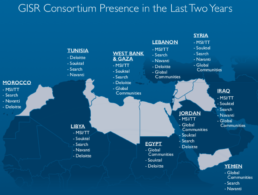
USAID ASIV IDIQ
USAID ASIV IDIQ
Analytical Services IV (ASIV)
Navanti secured a seat on Analytical Services IV (ASIV) IDIQ. It is an Agency-wide $70 million indefinite delivery indefinite quantity contract. The purpose of the IDIQ is to provide the Bureau for Democracy, Conflict and Humanitarian Assistance’s Center of Excellence on Democracy, Human Rights and Governance (DCHA/DRG) with the experts, resources, and analytical tools to respond to requests for democracy, human rights and governance (DRG) Assessments, DRG sub-sectoral, and related assessments or analysis; technical assistance to support DRG strategic planning, program design, and results management; research, special studies, and surveys; training and networking support; and rapid response transitional environment support. Analytical services under this IDIQ will improve USAID’s ability to promote resilient, democratic societies, and support U.S foreign policy objectives. Support for democracy, human rights and governance is vital to the pursuit of freedom and national security, and is essential to achieve the Agency’s and the U.S. Government’s broader social and economic development goals.
Specifically, units can use ASIV to:
DRG assessments, applied political economy analyses, sub-sectoral and technical assessments or analyses;
DRG strategy development and support for strategic planning;
Program design and results management support;
Research, special studies and surveys;
Training development and delivery, and professional networking; and
DRG rapid response analytical and technical assistance support for transitional environments.
WHO CAN USE ASIV
USAID operating units will be able to draw upon the IDIQ’s analytical services to ensure that DRG sector and sub-sector strategies, planning and decision making, programs, performance management plans, and monitoring and evaluation plans are based on in- depth, well-informed, gender sensitive assessments and analyses; research; valid data; expertise and best practices in the field of democracy, human rights, and governance. The IDIQ will also provide expertise to operating units seeking to apply PEA across sectors, such as health, agriculture, education, and biodiversity, in order to encourage integrated programming and improved governance in those and other sectors. The analytical workperformed under the IDIQ will strengthen DRG outcomes across USAID’s fieldmissions, including in complex, transitioning, and post-conflict environments. The analytical work performed under the IDIQ will also integrate the principles of ADS 205 on Integrating Gender Equality and Female Empowerment in USAID’s Program Cycle.This IDIQ also gives DCHA/DRG a degree of technical oversight and engagement with analytical activities undertaken in the field.
USAID MEO IDIQ
USAID MEO IDIQ
Management Excellence for Operations (MEO)
Navanti secured a seat on The Management Excellence for Operations (MEO) IDIQ. It is an Agency-wide $40 million indefinite delivery indefinite quantity contract. The purpose of the MEO IDIQ is to strengthen operations performance management practices at USAID. Specifically, operating units can use MEO to:
analyze operations performance data, processes, and management issues to improve USAID’s efficiency and effectiveness;
provide surge capacity, support, and technical assistance to USAID operating units to comply with internal and external requirements related to operations performance management;
improve the USAID’s internal and external communications, products, and information.
WHO CAN USE MEO
All Washington and overseas USAID operating units can access MEO. The Bureau for Management’s Office of Management Policy, Budget, and Performance (M/MPBP) manages the MEO contract, and each task order is independently administered by the issuing operating unit. If an operating unit is interested in using MEO, it must submit a scope of work to the contracting office representative (COR) for approval. The COR, Maggie Strong, can be reached at mastrong@usaid.gov
Countries
Countries
September 23, 2020
Investing in Women Key to Tunisia’s Democratic Future
September 4, 2020
What Our Analysts Are Reading – August, 2020
August 30, 2020
Snapshot of COVID-19 Under Al Shabaab
July 30, 2020
What Our Analysts Are Reading — July, 2020
July 24, 2020
Drifting through the Global Plastic Crisis
July 2, 2020
Hungary’s Roma Face Dark Days
June 30, 2020
What Our Analysts Are Reading – June, 2020
May 31, 2020
What Our Analysts Are Reading – May, 2020
May 6, 2020
Iraq’s Opportune Moment for Change
April 28, 2020
What Our Analysts Are Reading – April, 2020
April 21, 2020
Colombia Rural Insecurity – April 20, 2020
March 25, 2020
What Our Analysts Are Reading — 3/25
March 18, 2020
Navanti Maps Migration Routes through Yemen
February 25, 2020
What Our Analysts Are Reading — 2/25
January 23, 2020
Navanti’s 2019 Year in Review
December 25, 2019
What Our Analysts Are Reading — 12/25
November 25, 2019
What Our Analysts Are Reading — 11/25
October 28, 2019
Slideshow: Scenes of Daily Life in Sana’a, Yemen
October 25, 2019
What Our Analysts Are Reading — 10/25
October 23, 2019
Infographic: 2019 Fuel Prices in Somalia
September 25, 2019
Iranian Kurdish Porters Face Death With Every Trip Into Iraq
September 25, 2019
What Our Analysts Are Reading — 9/25
September 5, 2019
Looming Threat of Invasion Keeps Northern Syria’s Residents on Edge
August 5, 2019
Navanti Releases 2019 Periodic Table of Terrorist Groups
May 14, 2019
Scenes of Life in Syria’s Rukban IDP Camp
January 30, 2019
Navanti wins seat on the GISR MENA Consortium
January 28, 2019
Navanti Joins the Society for International Development
January 15, 2019
The Burden of Unequal Inheritance Laws on Moroccan Women
November 29, 2018
Lessons from the Past for Tunisia’s 2019 Elections
November 15, 2018
The Challenge Facing Counterterrorism Efforts in Postwar Yemen
September 27, 2018
Unconventional Houthi War Tactics
June 11, 2018
The Economic Impact of Boko Haram Rule
April 25, 2018
Life Under Siege in Ta’izz, Yemen
March 19, 2018
Socotra — A Remarkable Island Untouched by Yemen’s War
February 14, 2018
Life after ISIS in Busayra, Deir al-Zour
January 29, 2018
The Acceptance Model — Benefits and Drawbacks
January 18, 2018
Life After ISIS in Tabqah, Syria
December 21, 2017
Spot Threat Assessment Series: Jerusalem Embassy Move
November 1, 2017
Photo Essay: A Village Weathers Boko Haram
October 24, 2017
How Do Threat Assessments Work?
August 7, 2017
Residents in East Africa leery toward drones
February 27, 2017
Supporting USGIF’s EdGEOcation Giving Campaign
January 20, 2017
Loss of Government Salaries hurts Yemen’s Families
January 12, 2017
The Human Toll of “Kneel and Starve” in al-Waer
December 29, 2016
What’s it like to be a Freelance Journalist in Syria?
December 27, 2016
Jihadis eye South East Asia
December 15, 2016
Tragedy Defines, not deters, Activists
November 14, 2016
Geopolitics, Jobs, and the Local Economy in a Lithuanian Border Town
October 11, 2016
Reducing Cigarette Smuggling in Lithuania
September 29, 2016
Formerly Separatist-Held Kramatorsk, Ukraine Continues its Recovery
September 16, 2016
Refugee Voices in Greece — Online, on Social Media, and on the Ground
September 5, 2016
Tending to Strays — and Civil Society — in Central Ukraine
July 27, 2016
Playgrounds for Eid
July 21, 2016
Soccer Ultras: A Point of Unity in Ukraine
June 30, 2016
Photo Essay: IDPs in Maimusari
Countries
Albania
Armenia
Belarus
Bosnia
Cameroon
China
Colombia
Congo
Estonia
Georgia
Greece
Hungary
India
Iran
Iraq
Jordan
Kosovo
Kuwait
Lake Chad
Latvia
Libya
Lithuania
Mali
Moldova
Morocco
Mozambique
Myanmar
Nicaragua
Niger
Nigeria
North Macedonia
Oman
Phillippines
Russia
Saudi Arabia
Somalia
Sudan
Syria
Transnistria
Tunisia
Turkey
Ukraine
Yemen
Navanti News
Navanti News
September 23, 2020
Investing in Women Key to Tunisia’s Democratic Future
September 4, 2020
What Our Analysts Are Reading – August, 2020
August 30, 2020
Snapshot of COVID-19 Under Al Shabaab
July 30, 2020
What Our Analysts Are Reading — July, 2020
July 24, 2020
Drifting through the Global Plastic Crisis
July 2, 2020
Hungary’s Roma Face Dark Days
June 30, 2020
What Our Analysts Are Reading – June, 2020
May 31, 2020
What Our Analysts Are Reading – May, 2020
May 6, 2020
Iraq’s Opportune Moment for Change
April 28, 2020
What Our Analysts Are Reading – April, 2020
April 21, 2020
Colombia Rural Insecurity – April 20, 2020
March 25, 2020
What Our Analysts Are Reading — 3/25
March 18, 2020
Navanti Maps Migration Routes through Yemen
February 25, 2020
What Our Analysts Are Reading — 2/25
January 23, 2020
Navanti’s 2019 Year in Review
December 25, 2019
What Our Analysts Are Reading — 12/25
November 25, 2019
What Our Analysts Are Reading — 11/25
October 28, 2019
Slideshow: Scenes of Daily Life in Sana’a, Yemen
October 25, 2019
What Our Analysts Are Reading — 10/25
October 23, 2019
Infographic: 2019 Fuel Prices in Somalia
September 25, 2019
Iranian Kurdish Porters Face Death With Every Trip Into Iraq
September 25, 2019
What Our Analysts Are Reading — 9/25
September 5, 2019
Looming Threat of Invasion Keeps Northern Syria’s Residents on Edge
August 5, 2019
Navanti Releases 2019 Periodic Table of Terrorist Groups
May 14, 2019
Scenes of Life in Syria’s Rukban IDP Camp
January 30, 2019
Navanti wins seat on the GISR MENA Consortium
January 28, 2019
Navanti Joins the Society for International Development
January 15, 2019
The Burden of Unequal Inheritance Laws on Moroccan Women
November 29, 2018
Lessons from the Past for Tunisia’s 2019 Elections
November 15, 2018
The Challenge Facing Counterterrorism Efforts in Postwar Yemen
September 27, 2018
Unconventional Houthi War Tactics
June 11, 2018
The Economic Impact of Boko Haram Rule
April 25, 2018
Life Under Siege in Ta’izz, Yemen
March 19, 2018
Socotra — A Remarkable Island Untouched by Yemen’s War
February 14, 2018
Life after ISIS in Busayra, Deir al-Zour
January 29, 2018
The Acceptance Model — Benefits and Drawbacks
January 18, 2018
Life After ISIS in Tabqah, Syria
December 21, 2017
Spot Threat Assessment Series: Jerusalem Embassy Move
November 1, 2017
Photo Essay: A Village Weathers Boko Haram
October 24, 2017
How Do Threat Assessments Work?
August 7, 2017
Residents in East Africa leery toward drones
February 27, 2017
Supporting USGIF’s EdGEOcation Giving Campaign
January 20, 2017
Loss of Government Salaries hurts Yemen’s Families
January 12, 2017
The Human Toll of “Kneel and Starve” in al-Waer
December 29, 2016
What’s it like to be a Freelance Journalist in Syria?
December 27, 2016
Jihadis eye South East Asia
December 15, 2016
Tragedy Defines, not deters, Activists
November 14, 2016
Geopolitics, Jobs, and the Local Economy in a Lithuanian Border Town
October 11, 2016
Reducing Cigarette Smuggling in Lithuania
September 29, 2016
Formerly Separatist-Held Kramatorsk, Ukraine Continues its Recovery
September 16, 2016
Refugee Voices in Greece — Online, on Social Media, and on the Ground
September 5, 2016
Tending to Strays — and Civil Society — in Central Ukraine
July 27, 2016
Playgrounds for Eid
July 21, 2016
Soccer Ultras: A Point of Unity in Ukraine
June 30, 2016
Photo Essay: IDPs in Maimusari
Contact Us
Contact Us
Mailing Address: 1201 Wilson Blvd, #25-108 Arlington, VA 22209
Email: Info@NavantiGroup.com
Phone: (703) 522-1020
About Us
About Us
Who We Are
Navanti recruits people that have found a purpose in making a positive impact in the world.
We are linguists, on-the-ground researchers, and analysts dedicated to delivering real-time insight into the economic, political, and security trends shaping our world.
Why We Are Different
We make complex datasets accessible, using geospatial frameworks, perspectives from local contacts and expert analysis.
Our unique primary data, near real-time analytics, and technology-enabled cost effective solutions set us apart.
Where Clients Benefit
Through primary data analysis, we help teams in government, the private sector, and civil society shape actionable understanding of local dynamics.
Our suite of scalable solutions help clients operate, with cultural sensitivity, across Africa, Europe, Asia and the Middle East.


